A calf had just been born when the Irish Farmers Journal visited Footprint farmer Martin Crowe last Friday.
It’s a busy time on the farm, with 160 cows and 40 heifers due to calve down. Calving started early this year for Martin, with the first calf hitting the ground on 31 December. This calf was a month early. The next calf arrived on 8 January, while the expected calving date on ICBF was 15 January.
Planning for the year ahead
Martin’s nutrient management plan, carried out with the Irish Farmers Journal, has given him his allowances for nitrogen (N), phosphorus (P) and potassium (K) usage for the year.
A nutrient management plan is an essential tool to ensure that fields get the correct nutrients so that soil fertility is sufficient to carry the farm’s stocking rate and to support a profitable crop yield.
Martin’s focus is cutting back on his artificial N use, and over the past couple of years he has decreased his use from almost 200kg of nitrogen per hectare to 93kg N/ha last year.
The aim is to get artificial N usage to 40kg to 50kg/ha, with most of this going to silage ground.
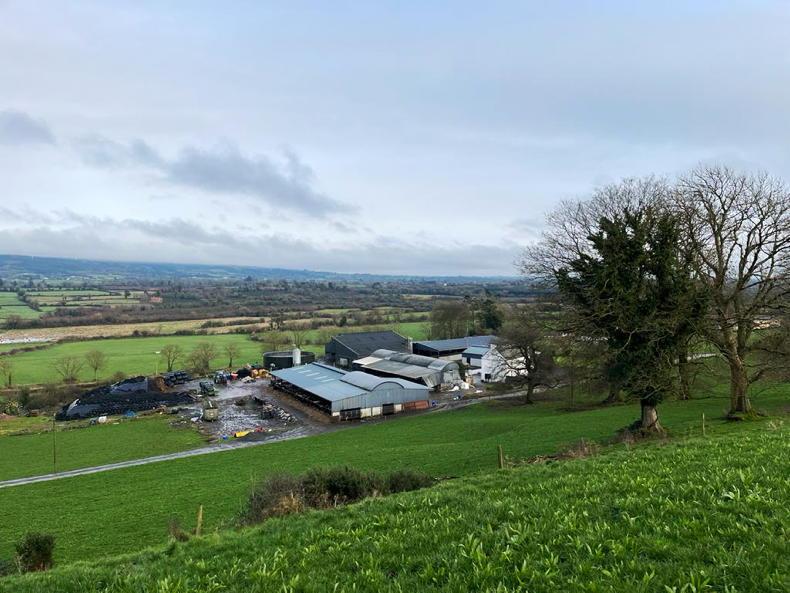
Multispecies swards seen here in the foreground have proven to be a valuable asset on Martin's farm.
In order to achieve the level of chemical N usage on the farm today, Martin has oversown clover on to his milking platform and put in 15 acres of multispecies swards.
In the next few years, he hopes to oversow clover on some rented ground, as well as oversow some multispecies swards in any paddocks that are damaged this spring.
As we walk around the farm, clover that was oversown last year is abundant in the paddocks.
This has, and will continue to help Martin cut back on artificial N until he reaches his target of 40kg/ha.
Clover and plantain are abundant in the multispecies swards also, with the chicory slower to come back.
Martin found that the less N spread on the multispecies swards, the better the performance of the sward.
Last September, the whole milking platform, including the multispecies swards was blanket spread with 25 units/N per ha.
One paddock was left, and when it was opened for grazing a month later, Martin found that it had more dry matter than the other multispecies paddocks that had received N.
Therefore, this year, these paddocks will receive less N, and further help Martin reduce costs.
The benefits of clover
Martin strongly believes that clover has been an integral part of cutting his artificial N use and some areas of the farm haven’t received chemical N in two years as a result of its inclusion in the sward.
The sward in question has kept up with the rotation, and will be the first paddock to be grazed when the cows go out this week, with a cover of approximately 1,400kg DM/ha.
The clover has been consistent in the sward ever since also. Martin doesn’t plan to spread any chemical N there this year either.
The paddock got dairy washings at the end of November which he thinks has helped to boost growth.
In terms of having health issues with high levels of clover in the sward, Martin says he has yet to encounter an issue with bloat.
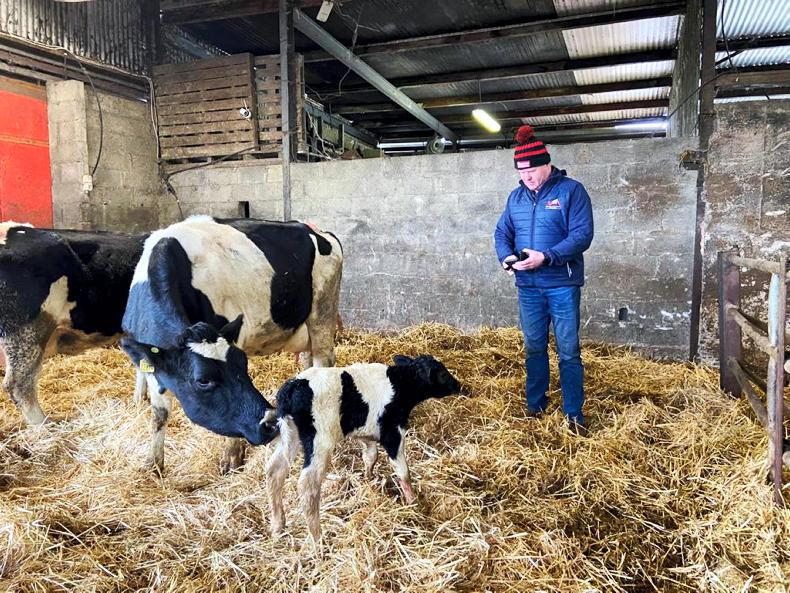
Martin records the details of the cow and calf as soon as the calf is born.
However, he says that rearing calves on these swards can help them become immune to the issue, and so he plans to do this on his outfarm where he rears his replacement heifers this year.
Clover will be oversown here this year if the soil fertility is right. Clover likes a fertile soil with a good pH of 6.3 to 6.5.
Multispecies swards a firm part of farm’s future
Fifteen acres of multispecies swards were sown on the farm in August 2021.
There were paddocks that were damaged by the cows last year and Martin decided to oversow these with a multispecies sward mix also.
One paddock that had exposed soil from the damage took off particularly well, and Martin says that any damaged paddock this spring will receive the same treatment, and this will further allow him to decrease his chemical fertiliser usage and cut costs.
In terms of P and K, Martin is waiting on new soil test results to finalise his plans. However, he hopes to get enough from slurry to cover most of the farm.
Lime: cheapest fertiliser
Martin is a firm believer in the power of lime. From the soil test results taken two years ago, 33.6% of the ground had a pH of 5.5 to 5.9, while a further 29.3% of the farm was at 5.9 to 6.2, and 13.7% had a pH of less than 5.5. This shows that there was some work needed to improve the pH status of the soil, which is critical for clover establishment. Therefore, Martin spread up to three tonnes per acre of lime to these areas, and saw clover take off approximately two months later.
Based on soil test result recommendations, Martin spread lime at rates of 1.5t/acre up to 3t/acre.
The farm was scored for clover as part of the Footprint Farmers Programme and scores of up to 70% clover distribution were reported.
A calf had just been born when the Irish Farmers Journal visited Footprint farmer Martin Crowe last Friday.
It’s a busy time on the farm, with 160 cows and 40 heifers due to calve down. Calving started early this year for Martin, with the first calf hitting the ground on 31 December. This calf was a month early. The next calf arrived on 8 January, while the expected calving date on ICBF was 15 January.
Planning for the year ahead
Martin’s nutrient management plan, carried out with the Irish Farmers Journal, has given him his allowances for nitrogen (N), phosphorus (P) and potassium (K) usage for the year.
A nutrient management plan is an essential tool to ensure that fields get the correct nutrients so that soil fertility is sufficient to carry the farm’s stocking rate and to support a profitable crop yield.
Martin’s focus is cutting back on his artificial N use, and over the past couple of years he has decreased his use from almost 200kg of nitrogen per hectare to 93kg N/ha last year.
The aim is to get artificial N usage to 40kg to 50kg/ha, with most of this going to silage ground.

Multispecies swards seen here in the foreground have proven to be a valuable asset on Martin's farm.
In order to achieve the level of chemical N usage on the farm today, Martin has oversown clover on to his milking platform and put in 15 acres of multispecies swards.
In the next few years, he hopes to oversow clover on some rented ground, as well as oversow some multispecies swards in any paddocks that are damaged this spring.
As we walk around the farm, clover that was oversown last year is abundant in the paddocks.
This has, and will continue to help Martin cut back on artificial N until he reaches his target of 40kg/ha.
Clover and plantain are abundant in the multispecies swards also, with the chicory slower to come back.
Martin found that the less N spread on the multispecies swards, the better the performance of the sward.
Last September, the whole milking platform, including the multispecies swards was blanket spread with 25 units/N per ha.
One paddock was left, and when it was opened for grazing a month later, Martin found that it had more dry matter than the other multispecies paddocks that had received N.
Therefore, this year, these paddocks will receive less N, and further help Martin reduce costs.
The benefits of clover
Martin strongly believes that clover has been an integral part of cutting his artificial N use and some areas of the farm haven’t received chemical N in two years as a result of its inclusion in the sward.
The sward in question has kept up with the rotation, and will be the first paddock to be grazed when the cows go out this week, with a cover of approximately 1,400kg DM/ha.
The clover has been consistent in the sward ever since also. Martin doesn’t plan to spread any chemical N there this year either.
The paddock got dairy washings at the end of November which he thinks has helped to boost growth.
In terms of having health issues with high levels of clover in the sward, Martin says he has yet to encounter an issue with bloat.

Martin records the details of the cow and calf as soon as the calf is born.
However, he says that rearing calves on these swards can help them become immune to the issue, and so he plans to do this on his outfarm where he rears his replacement heifers this year.
Clover will be oversown here this year if the soil fertility is right. Clover likes a fertile soil with a good pH of 6.3 to 6.5.
Multispecies swards a firm part of farm’s future
Fifteen acres of multispecies swards were sown on the farm in August 2021.
There were paddocks that were damaged by the cows last year and Martin decided to oversow these with a multispecies sward mix also.
One paddock that had exposed soil from the damage took off particularly well, and Martin says that any damaged paddock this spring will receive the same treatment, and this will further allow him to decrease his chemical fertiliser usage and cut costs.
In terms of P and K, Martin is waiting on new soil test results to finalise his plans. However, he hopes to get enough from slurry to cover most of the farm.
Lime: cheapest fertiliser
Martin is a firm believer in the power of lime. From the soil test results taken two years ago, 33.6% of the ground had a pH of 5.5 to 5.9, while a further 29.3% of the farm was at 5.9 to 6.2, and 13.7% had a pH of less than 5.5. This shows that there was some work needed to improve the pH status of the soil, which is critical for clover establishment. Therefore, Martin spread up to three tonnes per acre of lime to these areas, and saw clover take off approximately two months later.
Based on soil test result recommendations, Martin spread lime at rates of 1.5t/acre up to 3t/acre.
The farm was scored for clover as part of the Footprint Farmers Programme and scores of up to 70% clover distribution were reported.






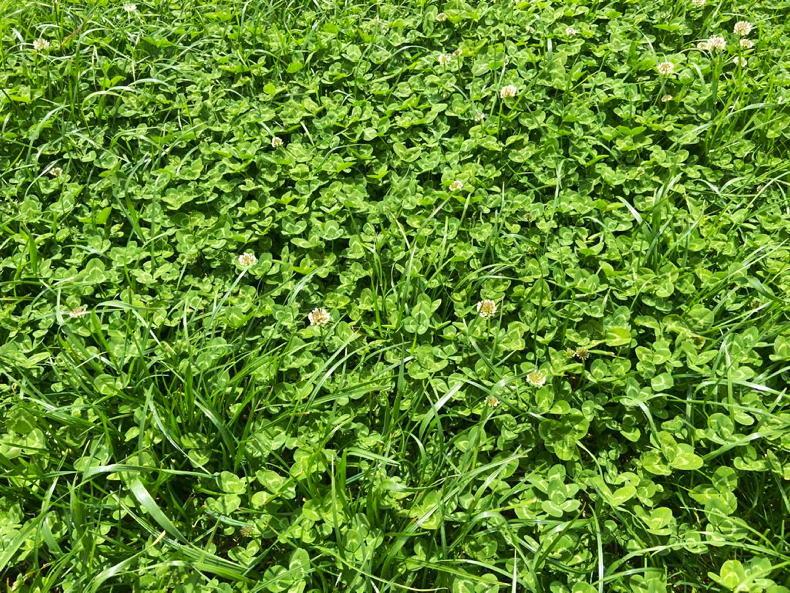


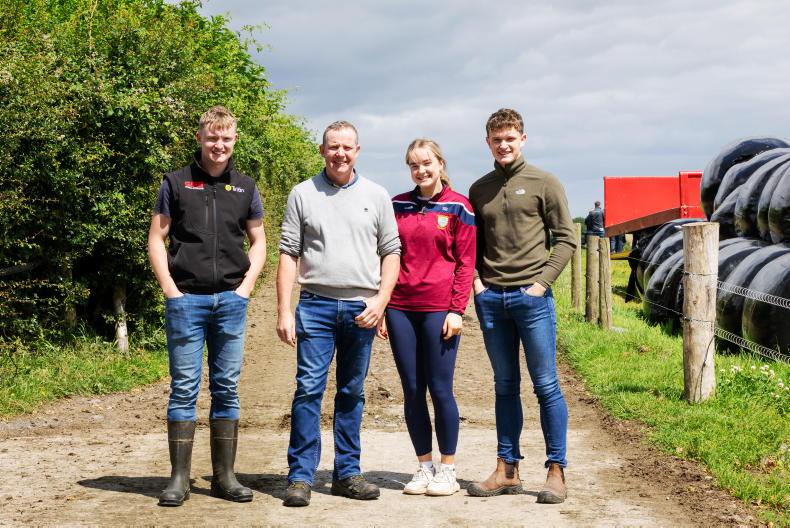
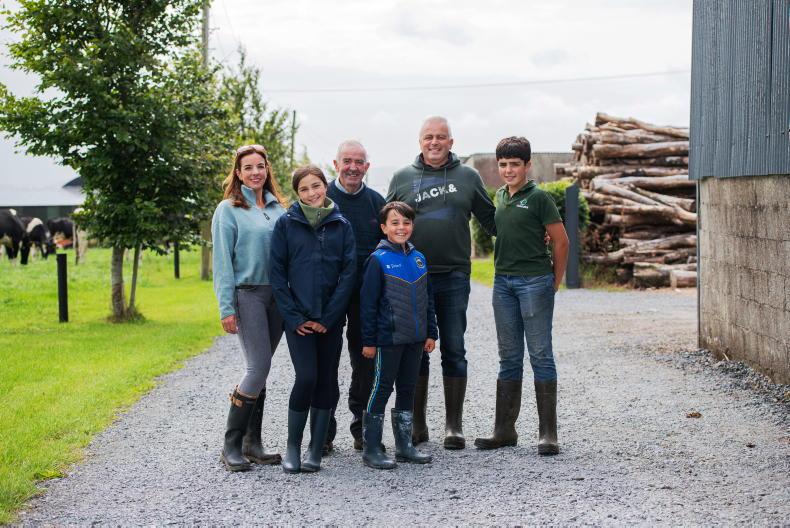
SHARING OPTIONS